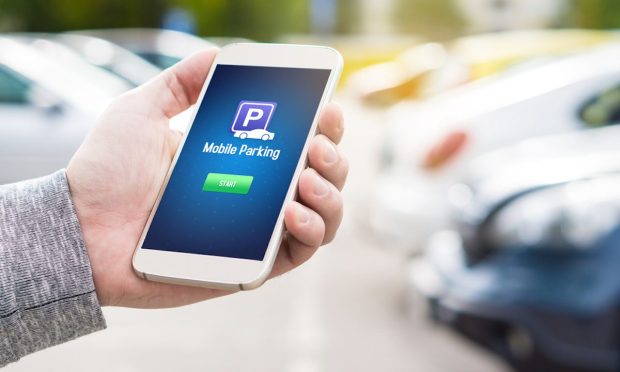As Parking Industry Recovers, Providers Add Digital Payments Option

As the parking industry recovers from the slowdown at restaurants, events and other businesses during the pandemic, a growing number of parking providers are adding digital payment options. Their customers have come to expect this, just as they now often access restaurant menus through a QR code rather than print.
“Clearly, it’s just thinking about the consumer and the fact that you have a completely touchless or contactless option where consumers have now pivoted to transacting in that format,” Roamy Valera, PayByPhone’s CEO, U.S. and Canada, told PYMNTS. PayByPhone works with parking providers to offer drivers the option to pay for parking with their phone, via the company’s app or portal or by dialing its service number.
On Tuesday (Nov. 16), the company announced that it’s now offering contactless parking payments at the University of Illinois Urbana-Champaign’s 2,400 parking spaces. The company, which is a wholly-owned subsidiary of Volkswagen Financial Services AG, is now active in 1,000 cities across the globe and processes more than $550 million in payments per year.
“It’s an exciting time in the digital payments industry as a result of what’s happened over the last 18 to 20 months or so,” Valera noted.
Accelerating Use of Contactless Payment Options
When COVID hit in March 2020, about 90% of the parking business was lost overnight, Valera said. As cities started to open back up, the business slowly recovered. Today, parking in some cities is back to normal, while others are still down 10%, 15% or 20% compared to pre-COVID numbers. As Valera pointed out, it’s dependent on whether companies in large cities are sticking with work-from-home arrangements.
As businesses, traffic and parking have rebounded, there’s been a significant increase in the adoption of mobile payments and digital payments in general — and the PayByPhone application in particular.
“The pandemic accelerated the use of our value proposition, which is a contactless payment option,” Valera said. “We have seen our clients respond with a renewed interest in giving consumers the opportunity to not interact with a piece of hardware, and to physically complete a parking payment transaction from inside their car, office or home.”
Reducing the Traditional Friction in Parking
For the most part, parking continues to be a hardware-driven business, with a pay station handling multiple spaces or individual parking meters taking coins, cash and credit cards, Valera said. But the providers are increasingly adding other payment options or going directly from non-paid parking to a digital option.
“Parking has always been a very friction-filled environment,” he concluded. “If you’re in a business, if you’re providing a service to consumers, mobile payments and the ability to provide a simple way to pay for a service like parking should be one of your considerations.”
